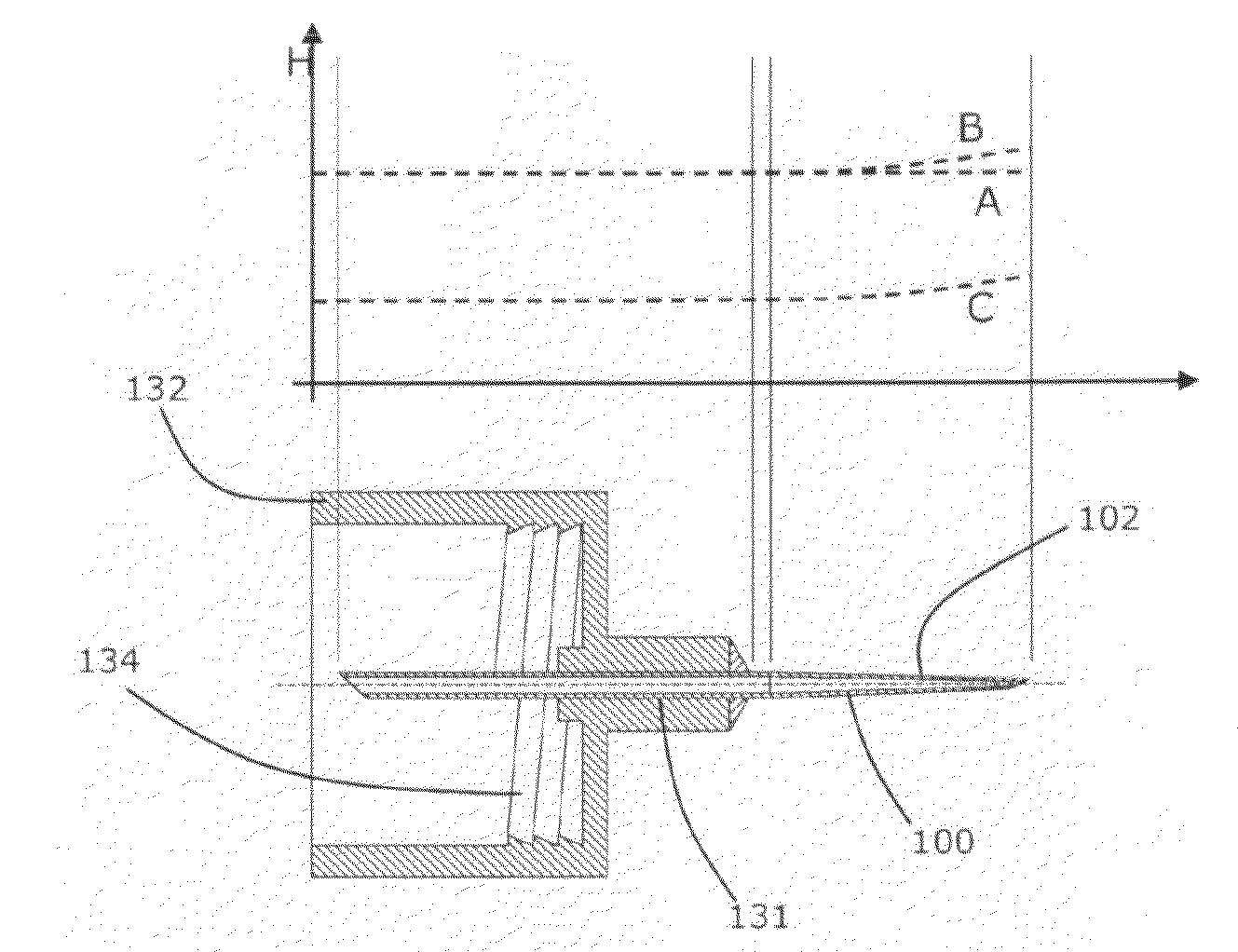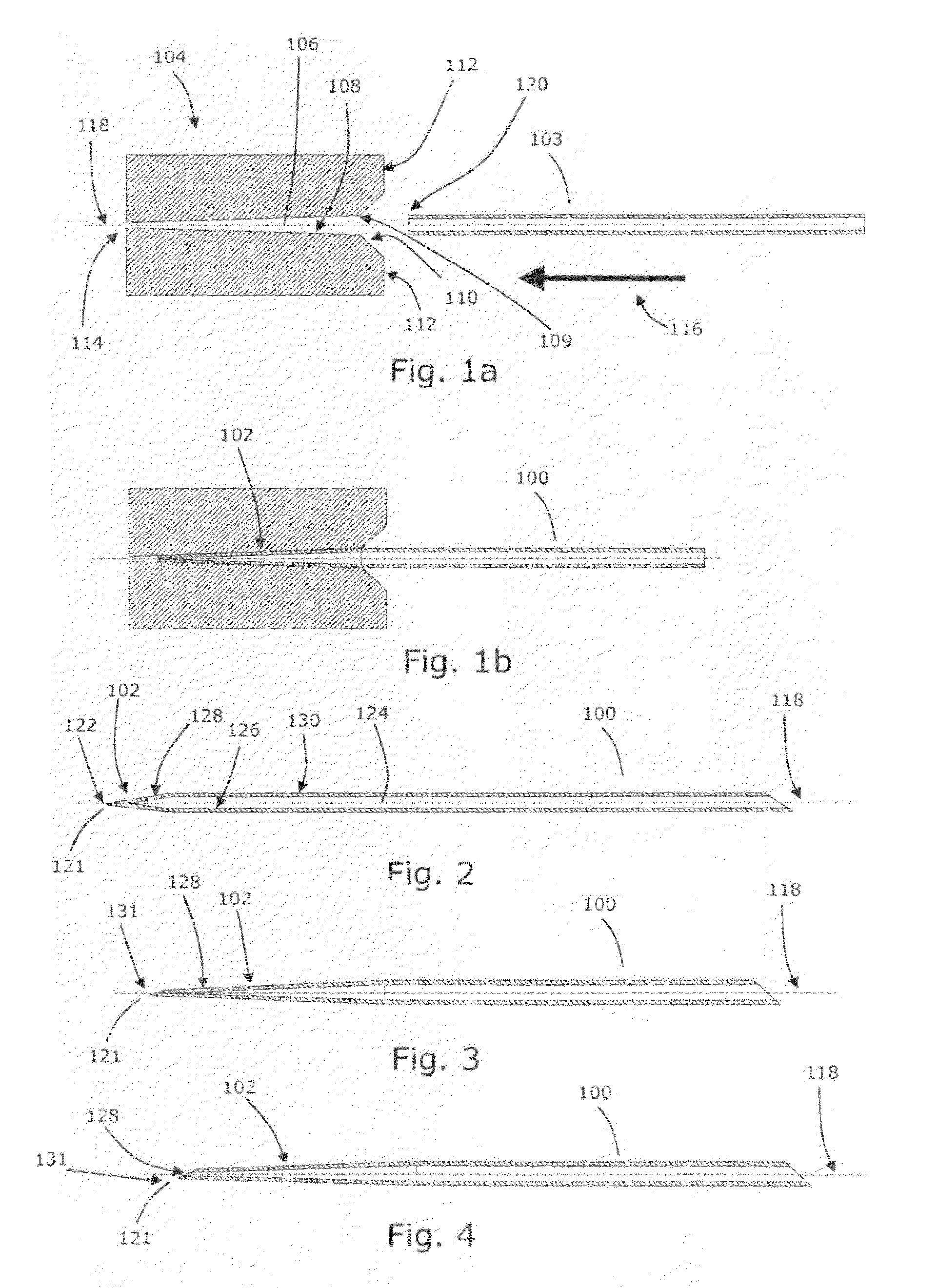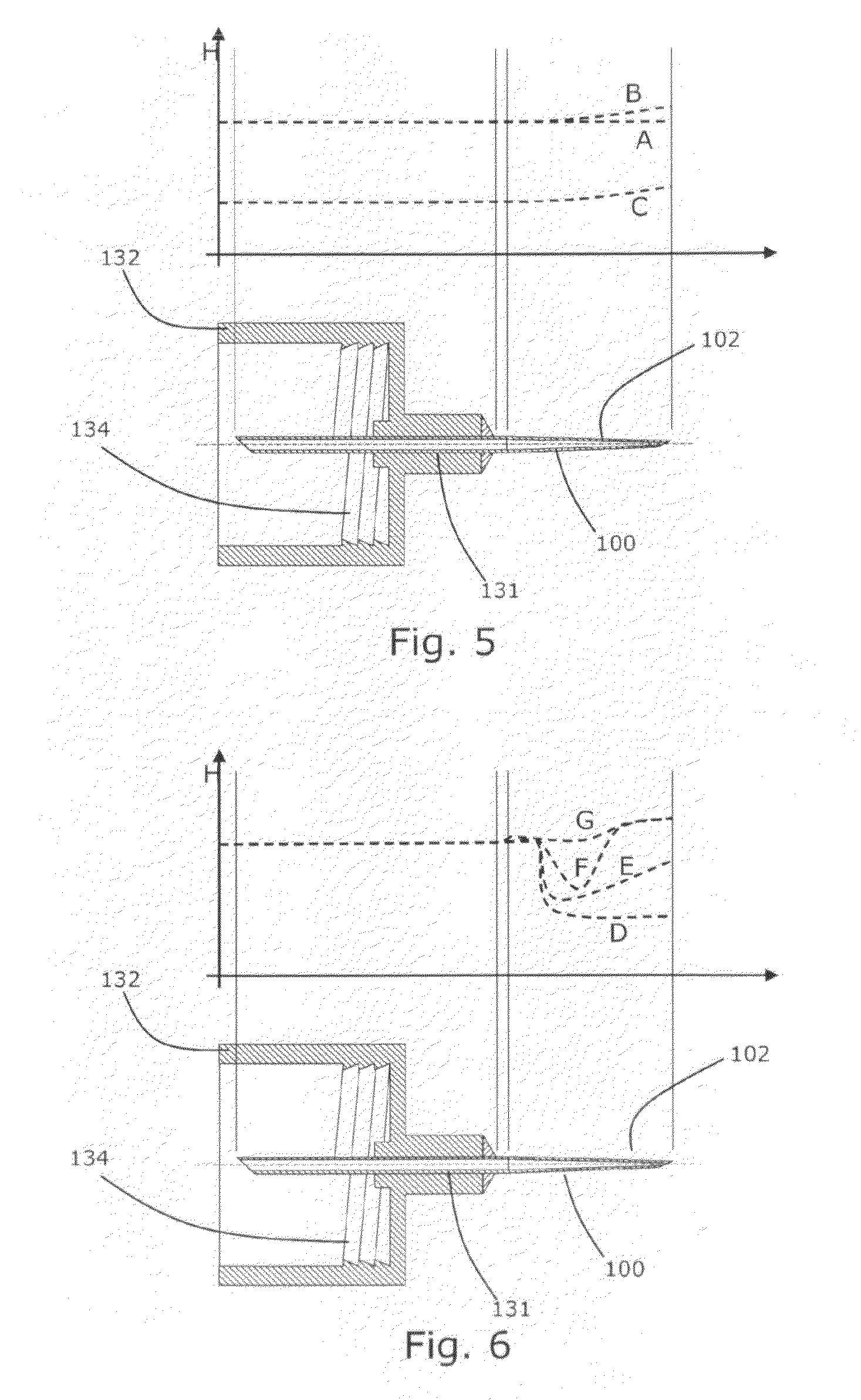Cannula For An Injection Device, The Cannula Having A Tapered End, And A Method For Manufacturing the Same
a cannula and injection device technology, applied in the field of cannulas for injection devices, can solve the problems of increased pain and unsatisfactory pain, and achieve the effect of reducing the stress on the tool parts
- Summary
- Abstract
- Description
- Claims
- Application Information
AI Technical Summary
Benefits of technology
Problems solved by technology
Method used
Image
Examples
Embodiment Construction
[0057]The invention will now be described in further detail with reference to the drawings in which:
[0058]FIGS. 1a-b disclose steps in the method according the first aspect of the invention,
[0059]FIGS. 2-4 disclose tapered cannula's according to the third aspect of the invention, and
[0060]FIGS. 5-6 disclose the hardness of cannula's annording to the third aspect of the invention.
[0061]FIGS. 1a and 1b disclose steps in the method for manufacturing a cannula 100 with a tapered end portion 102. Initially an tubular element 103 and a tool 104 defining a tapered cavity 106 are provided. The cavity 106 defines a shape-forming zone 108 and a guiding zone 110 which extends between an outer surface 112 and the shape-forming zone 108. In a transition 109 between the shape-forming zone 108 and the guiding zone 110 the diameter of the two zones are substantially identical. The diameter of the shape-forming zone 108 decreases from the transition 109 towards a bottom part 114 of the cavity i.e. i...
PUM
| Property | Measurement | Unit |
|---|---|---|
| Diameter | aaaaa | aaaaa |
| Diameter | aaaaa | aaaaa |
| Diameter | aaaaa | aaaaa |
Abstract
Description
Claims
Application Information
 Login to View More
Login to View More - R&D
- Intellectual Property
- Life Sciences
- Materials
- Tech Scout
- Unparalleled Data Quality
- Higher Quality Content
- 60% Fewer Hallucinations
Browse by: Latest US Patents, China's latest patents, Technical Efficacy Thesaurus, Application Domain, Technology Topic, Popular Technical Reports.
© 2025 PatSnap. All rights reserved.Legal|Privacy policy|Modern Slavery Act Transparency Statement|Sitemap|About US| Contact US: help@patsnap.com



